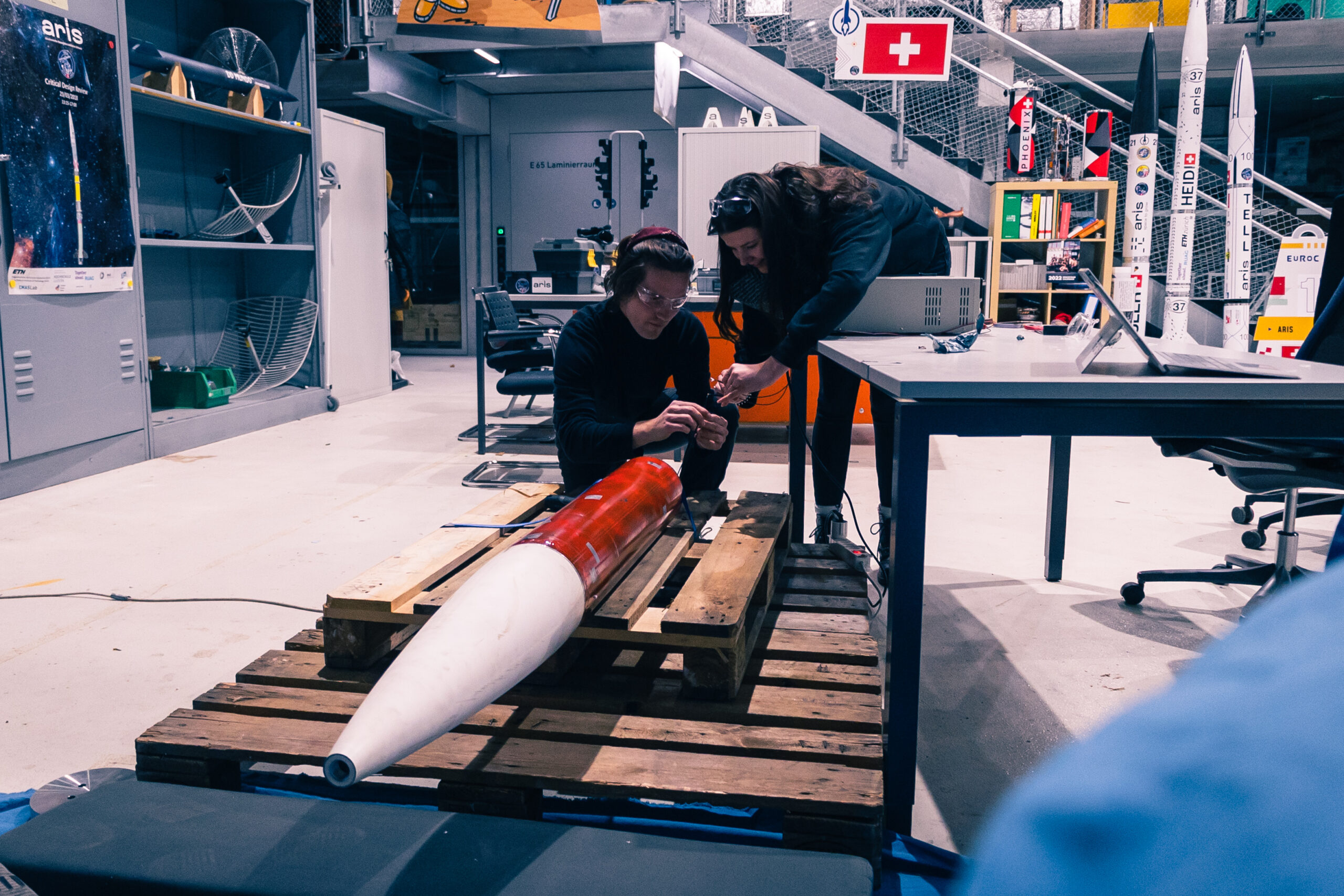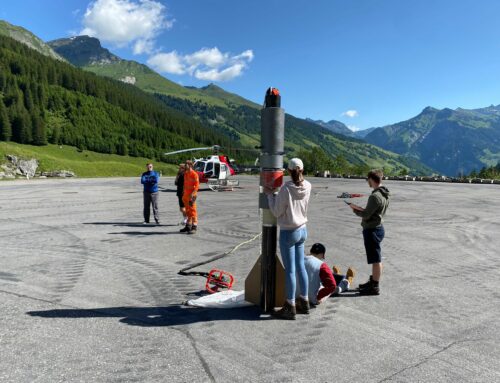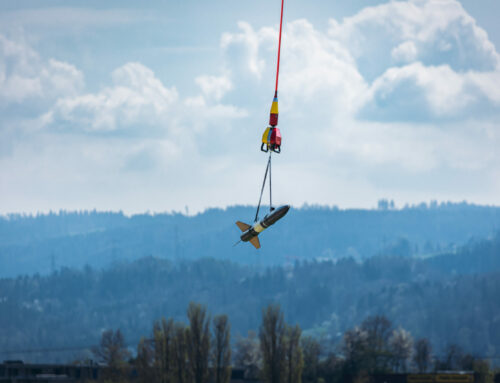As all previous ARIS sounding rockets team PERIPHAS deploys a small drogue parachute at apogee, the highest point of the rocket’s trajectory. This parachute ensures a slow and stable descent before opening the main parachute. During the flight, the parachutes are stored inside the rocket’s body. Consequently, an opening needs to be created in the rocket, so that the drogue and main parachutes can open itself through it. A separation mechanism creates said opening, by separating the nosecone (the tip of the rocket) from the rest of the system.
In order to eject the nosecone, we use a CO2 separation mechanism. At launch, the nosecone is attached to the body with two plastic pins, designed to break at a specific load. When separation is triggered, two high-pressure solenoid valves open and release liquid CO2. It is liquid because it’s stored at over 60 bars. As the solenoids open, the CO2 instantly gasifies and expands into the parachute tube, where it increases the pressure to about 1.5 bar. This overpressure pushes against the nosecone, and eventually breaks the plastic pins which were holding it. As the Nosecone is no longer attached to the rocket body, it will be ejected.
This mechanism is extremely important. If it fails, no parachutes will open and the rocket will impact the ground ballistically, with a speed of over 200 km/h! This would result in a complete loss of the system. Therefore, the separation is extensively tested before any real usage.
At PERIPHAS, we have tested our mechanism over 25 times, and spent a lot of time trying to fully understand all parameters – temperature, mass of CO2, solenoid orifice size, different shear pins and many more. This is a tedious and iterative process, but it gives us utmost confidence that our rocket will be reusable.
The mechanism will be tested in flight for the first time during our 3rd droptest on the 19th of May. Tune in next week to read our blog post about it!








Social Contact